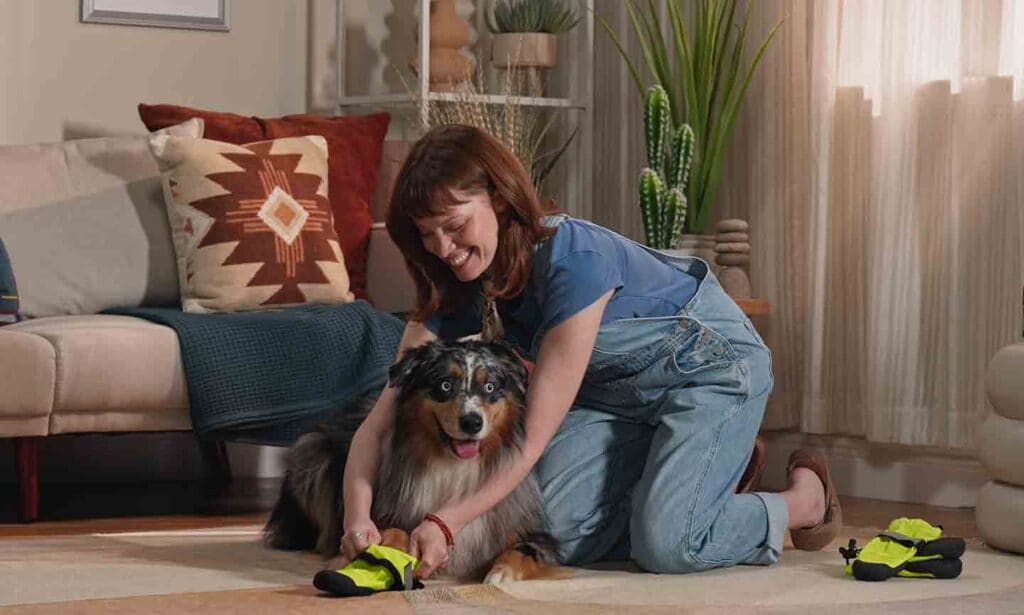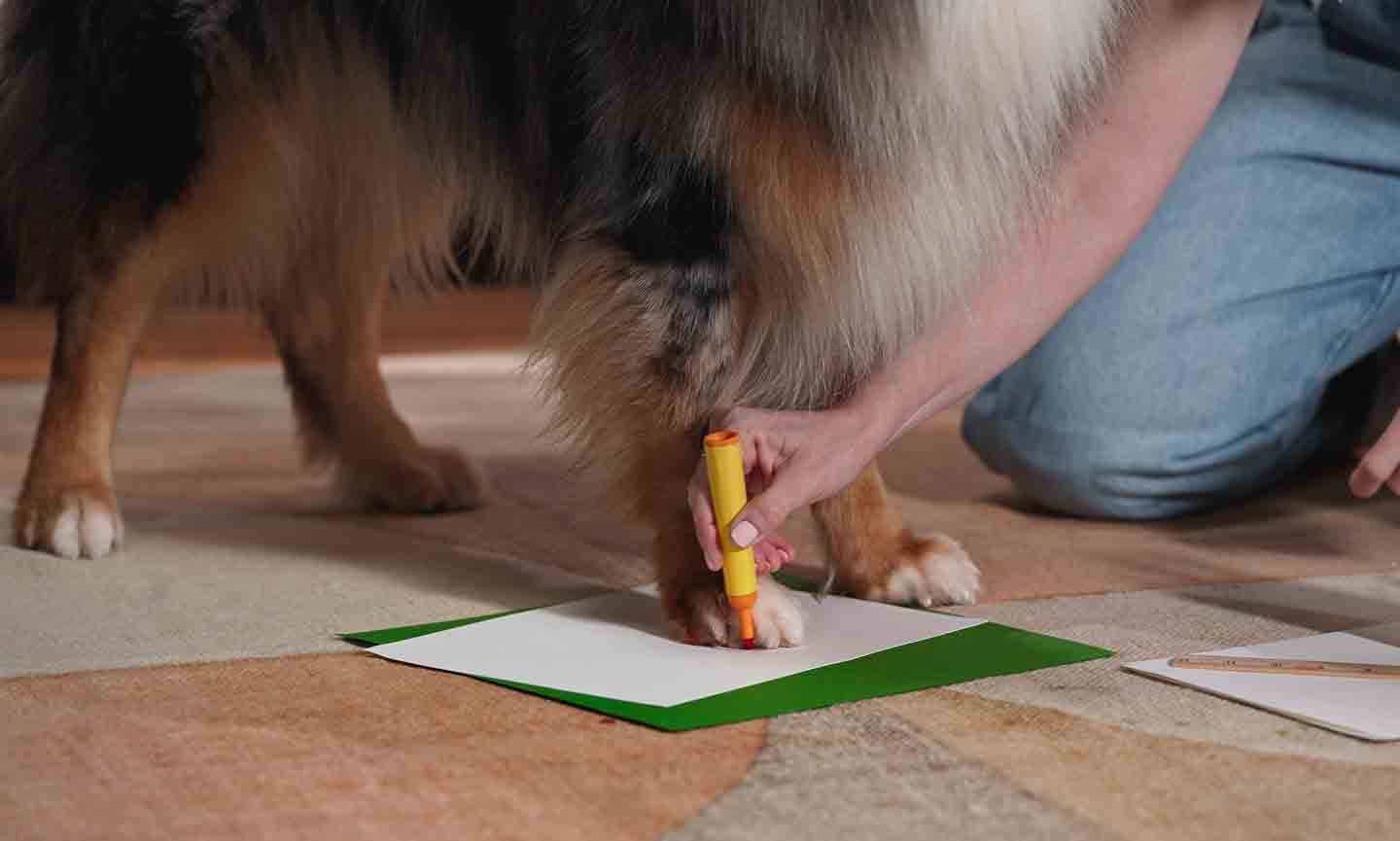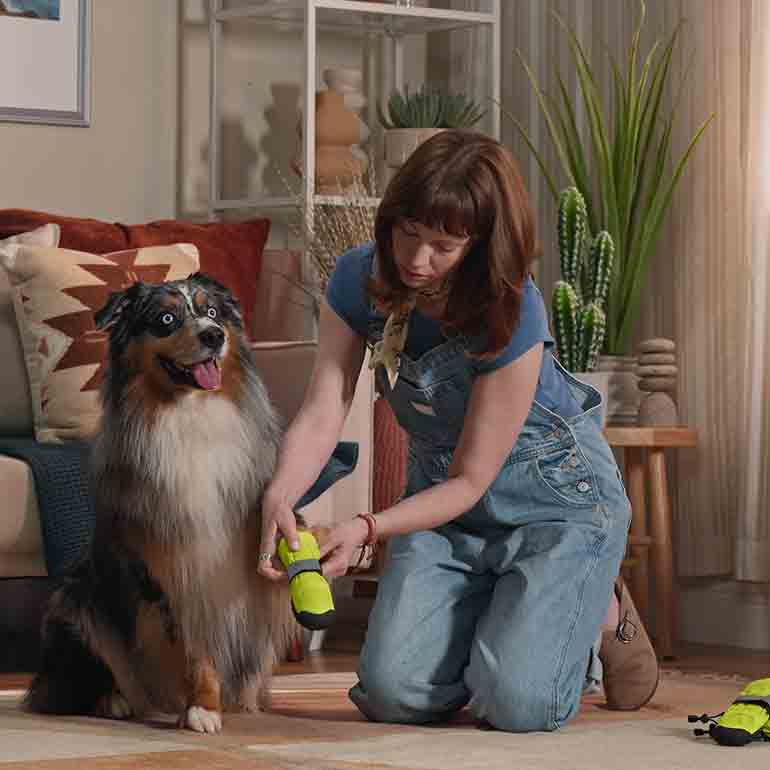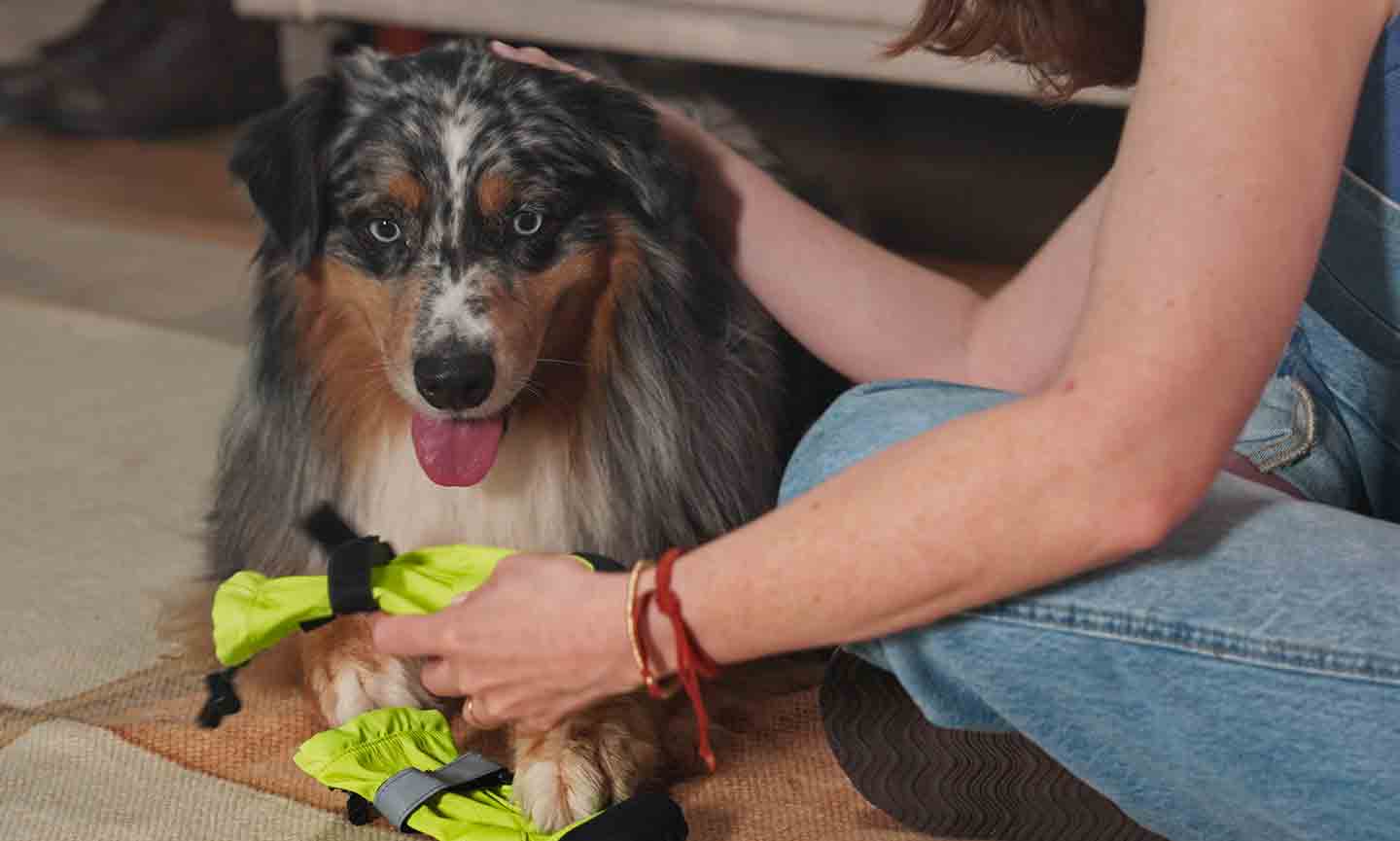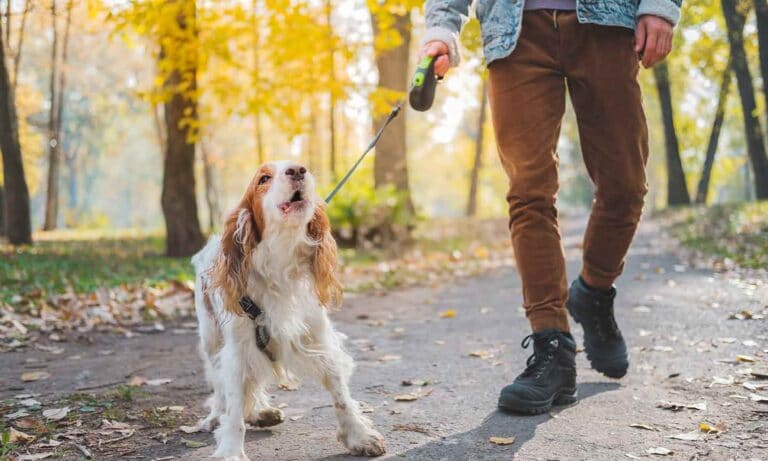How to Train Your Dog to Wear Dog Shoes
1 Get The Right Size
The first step is measuring your dog’s paws to ensure a comfortable fit. To find their shoe size, lay a piece of paper on the floor and have your dog stand on it with weight on one paw. Hold up one of your dog’s legs to help keep the weight of the other front paw on the paper.
Next, gently move their fur out of the way and draw an outline of the paw with a marker or pencil. Then, measure the distance of the paw width (horizontal), and refer to the size chart to determine the right size dog shoe. Repeat this for their back paws, since this size may be different from their front paws.
Different brands of shoes may have their own size charts, but you can refer to this Frisco guide:
XS
1 ½ – 1 ⅝
S
1 ¾ – 1 ⅞
M
2 – 2 ⅛
L
2 ¼ – 2 ⅜
XL
2 ½ – 2 ⅝
XXL
2 ¾ – 2 ⅞
XXXL
3 – 3 ¼
2Put The Shoes or Boots On Properly
While different shoes have their own nuances, putting them on is generally the same across all types of dog shoes. You’ll want to fully extend the top opening of the shoe, then slide your dog’s paw inside until it touches the front of the shoe or boot. From there, tightly secure with the strap and close the toggle. You can tuck the excess tail of the bungee into the elastic tab to keep your pup from walking on it.
Dewclaws can sometimes get in the way when putting on dog booties. For this reason, it’s important to hold down the dew claw with your finger as you slide your pup’s foot into the shoe. This eliminates snagging.
“Shoes should fit comfortably without being too tight or too loose, allowing for natural movement,” says Heather Sherman, CPDT-KA, CTDI, lead trainer for Applause Your Paws in the Fort Lauderdale, Florida area.
3Take The Right Training Steps
Some dogs are shoe-wearing naturals, while others may not like the idea. Still, if the shoes are necessary to protect their feet from the elements, you’ll want to ensure they’re wearing them. Here are some training tips from Sherman.
- Slowly introduce the shoes: Introduce the shoes to your dog gradually to help them acclimate. “Start by placing the shoes near your dog during playtime or mealtime to familiarize them with the scent and appearance,” Sherman says. “Allow your dog to investigate the shoes at their own pace, using positive reinforcement such as treats and praise to create positive associations.”
- Practice handling them: Engage with the shoes in front of your dog so they see they’re no big deal. “Open and close the shoes,” Sherman says, “allowing your dog to observe without feeling pressured.”
- Put the shoes on: Once your dog is comfortable being around the dog shoes or dog boots, hold one shoe near your dog's paw without attempting to put it on. From there, put on just one or two shoes. Make sure to reward calm behavior,
- Walk around inside: Let your dog get the feel of the shoes by wearing them around the house. This eliminates extra distractions from being outdoors and keeps them in a safe, calm and familiar environment.
- Head outside: Once your dog is comfortable wearing the shoes indoors, it's time to venture outside. “Start with short walks in familiar surroundings, gradually increasing the duration and intensity of the walks,” Sherman says. “Pay close attention to your dog's behavior, ensuring they are not experiencing any discomfort or difficulty while wearing the shoes.”
Over time, most pups will get used to wearing the shoes, making the process a simple step in your preparation for outdoor adventures. If your dog shows signs of discomfort or resistance, Sherman says to take a step back and revisit previous stages. Patience and consistency are key to success. And don’t be afraid to consult a professional dog trainer if necessary.
Does My Dog Need Shoes?
Dogs benefit from wearing shoes in certain scenarios, particularly in hot weather and cold weather where they benefit from paw protection on hot pavement, snowy or icy walkways, and rough terrain.
“Our dogs’ feet are very sensitive, and having proper footwear protects their paw pads,” Sherman says. “They also provide traction while walking. Also, many dogs, as they get older, need the extra support just for walking around their home.”
Dog boots may seem like a newfangled, unnatural intervention, but they ultimately ensure your dog’s safety. Humans didn’t used to wear shoes either—but now they’re integral to our daily lives.
How to Find the Perfect Shoes for Your Pup
From winter dog boots and hot weather dog socks with rubber soles, to water-resistant booties for rainy days, there are a lot of dog shoe options. You can even find shoes that are all-terrain, meaning they accommodate a range of needs.
Fit is the most important aspect when buying dog shoes. From there, Sherman recommends looking for the following features to ensure their comfort:
- Non-slip soles
- Breathable, lightweight fabrics (especially for summer months)
- Adjustable straps
- Velcro fastening (hook-and-loop features)
- Water-resistant or waterproof materials
Ensuring a proper fit is step one in helping your dog get familiar with shoes. From there, take your time in training them how to wear the dog shoes. This allows your dog to progress at their own pace, and ensures a more positive (and successful) experience from beginning to end. Oh, and don’t forget to load up on all that positive reinforcement!
Get more tips for protecting your dog’s paws in the heat.
Expert insights provided by Heather Sherman, CPDT-KA, lead trainer for Applause Your Paws in the Fort Lauderdale, Florida area.
Pet Fashion Finds
Share:
